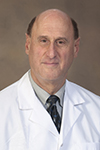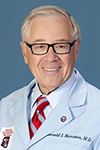 Growing national Telemedicine and Telehealth Service Provider Showcase (SPS) conference appoints 25 telemedicine thought leaders and health-care innovators to lead its third event.
Growing national Telemedicine and Telehealth Service Provider Showcase (SPS) conference appoints 25 telemedicine thought leaders and health-care innovators to lead its third event.
The award-winning Arizona Telemedicine Program (ATP) at the University of Arizona Health Sciences has announced the appointment of the National Advisory Board for the third national Telemedicine and Telehealth Service Provider Showcase (SPS), to be held Oct. 2-3, 2017, in Phoenix.
The Telemedicine and Telehealth Service Provider Showcase (SPS) 2017 conference will bring together companies that provide medical specialty services through telemedicine technology with hospitals and health-care providers who need these services to improve patient care and outcomes.
The 25 board members are nationally recognized thought leaders, health-care innovators and champions who have made major contributions in the telemedicine arena. Members of the SPS 2017 board are:
 Joseph S. Alpert, MD, editor-in-chief, The American Journal of Medicine; cardiologist, professor of medicine, and past department chair, University of Arizona College of Medicine – Tucson
Joseph S. Alpert, MD, editor-in-chief, The American Journal of Medicine; cardiologist, professor of medicine, and past department chair, University of Arizona College of Medicine – Tucson- Richard S. Bakalar, MD, managing director, advisory services in healthcare solutions, KPMG, LLP, Denver, Colo.
- David C. Balch, MA, chief technology officer, Vesalius Ventures, Houston, Texas
- Joel E. Barthelemy, president and chief executive officer, GlobalMed, Scottsdale, Ariz.
- Rashid Bashshur, PhD, senior adviser for eHealth, eHealth Center, University of Michigan Health System, Ann Arbor
- Anne E. Burdick, MD, MPH, associate dean for telehealth and clinical outreach and professor of dermatology, University of Miami Miller School of Medicine, Fla.
- Robert “Bob” Burns, commissioner, Arizona Corporation Commission, Phoenix
 Daniel J. Derksen, MD, (on right at right) director, Arizona Center for Rural Health; professor and Walter H. Pearce Endowed Chair, Community, Environment and Policy Department; UA Mel and Enid Zuckerman College of Public Health, Tucson
Daniel J. Derksen, MD, (on right at right) director, Arizona Center for Rural Health; professor and Walter H. Pearce Endowed Chair, Community, Environment and Policy Department; UA Mel and Enid Zuckerman College of Public Health, Tucson- Charles R. Doarn, editor-in-chief, Telemedicine and e-Health Journal, family medicine, University of Cincinnati, Ohio
- Joe G.N. “Skip” Garcia, MD, (on left at right) former senior vice president for health sciences; Merlin K. DuVal, MD Endowed Chair for Leadership and Innovation and professor of medicine, University of Arizona, Tucson
- Alexis S. Gilroy, JD, partner, Jones Day, Washington, D.C.
- Paula Guy, president and chief executive officer, Salus Telehealth, Waycross, Ga.
- B. Tilman Jolly, MD, FACEP, chief medical officer, Specialists On Call, Reston, Va.
- Nathaniel Lacktman, JD, partner, Foley & Lardner, LLP, Tampa, Fla.
- James P. Marcin, MD, MPH, professor, pediatric critical care, University of California – Davis Children’s Hospital, Sacramento
- Ronald C. Merrell, MD, editor-in-chief, Telemedicine and e-Health Journal, emeritus professor of surgery, Virginia Commonwealth University, Richmond
- Randall Moore, MD, president, Mercy Virtual, Chesterfield, Mo.
- Thomas S. Nesbitt, MD, MPH, associate vice chancellor and professor, family and community medicine, University of California – Davis Health System, Sacramento
- Marta J. Petersen, MD, medical director, Utah Telehealth Network, Salt Lake City
- Alan Pitt, MD, chief medical officer, Avizia; professor of neuroradiology, Barrow Neurological Institute, Phoenix
- Ronald K. Poropatich, MD, executive director, Center for Military Medicine Research, University of Pittsburgh Medical Center, Pittsburgh
- Dena Puskin, ScD, director (retired), state policy and market analysis, Center for Consumer Information and Insurance Oversight, Centers for Medicare and Medicaid Services, Potomac, Md.
- Karen Rheuban, MD, director, Center for Telehealth, University of Virginia, Charlottesville
- Jay H. Shore, MD, MPH, director of telemedicine, University of Colorado Depression Center, Aurora
- Nancy L. Vorhees, RN, MSN, chief operating officer, Inland Northwest Health Services, Spokane, Wash.
 “SPS is the first national meeting addressing telemedicine service provider issues,” said Ronald S. Weinstein, MD, ATP director and SPS honorary co-chair. “The greatly increased interest in SPS reflects and stimulates the growing market for telemedicine services and products.”
“SPS is the first national meeting addressing telemedicine service provider issues,” said Ronald S. Weinstein, MD, ATP director and SPS honorary co-chair. “The greatly increased interest in SPS reflects and stimulates the growing market for telemedicine services and products.”
Dr. Weinstein is joined in leading SPS by honorary co-chair Jay H. Sanders, MD, president and chief executive officer of The Global Telemedicine Group, along with co-chairs Dale C. Alverson, MD, medical director for the Center for Telehealth at the University of New Mexico Health Sciences Center, and Elizabeth A. Krupinski, PhD, co-director of the Southwest Telehealth Resource Center.
SPS is offered at 18-month intervals and focuses on building partnerships for bringing quality medical specialty services directly into hospitals, clinics, private practices and patients’ homes. The goals are to improve patient care and outcomes and to increase market share for both health-care provider organizations and the telehealth service providers with which they partner. The conference, first offered in 2014, grew to nearly 500 attendees from 36 states and 4 countries in 2016, and is expected to continue to grow in 2017.
SPS is co-hosted by the ATP, the Southwest Telehealth Resource Center and the Four Corners Telehealth Consortium, which includes telehealth leaders from Arizona, Colorado, New Mexico and Utah.
Telemedicine and Telehealth Service Provider Showcase (SPS) SPS brings together companies that provide medical specialty services through telemedicine technology with hospitals and health-care providers who need these services to improve patient care and outcomes. Offering a range of medical specialty services and supporting products in a single expo hall, SPS displays the latest trends in clinical telehealth and provides a rich and acclaimed curriculum of information for both service providers and those looking at services. The conference provides a platform to broker partnerships between telemedicine service providers and service users. It features practical talks by leaders from carefully selected telemedicine service provider companies, nationally known experts on telehealth business and hospital and health-care system C-suite trailblazers. For more information: www.TTSPSworld.com
SPS brings together companies that provide medical specialty services through telemedicine technology with hospitals and health-care providers who need these services to improve patient care and outcomes. Offering a range of medical specialty services and supporting products in a single expo hall, SPS displays the latest trends in clinical telehealth and provides a rich and acclaimed curriculum of information for both service providers and those looking at services. The conference provides a platform to broker partnerships between telemedicine service providers and service users. It features practical talks by leaders from carefully selected telemedicine service provider companies, nationally known experts on telehealth business and hospital and health-care system C-suite trailblazers. For more information: www.TTSPSworld.com
Arizona Telemedicine Program (ATP)
ATP was established in 1996 by the Arizona State Legislature to provide accessible, top-quality health care to rural Arizonans. ATP strongly supports the growth of telemedicine throughout Arizona and provides a suite of services to its member organizations, including clinical, administrative and information technology (IT) support; telemedicine training; facility design; and continuing medical education. More than 60 clinical subspecialty services have been provided through the network, amounting to more than 1.3 million telemedicine cases. ATP is home to the federally funded Southwest Telehealth Resource Center, which serves Arizona, Colorado, Nevada, New Mexico and Utah. ATP has received many national awards for its innovative education and training programs. For more information: http://telemedicine.arizona.edu
Four Corners Telehealth Consortium
The Four Corners Telehealth Consortium (FCTC) was formed in 2004 by academic telemedicine programs in Arizona, Colorado, New Mexico and Utah to serve as a model for regional telehealth collaboration in the United States, unconstrained by geographical or jurisdictional barriers.
About the University of Arizona Health Sciences
The University of Arizona Health Sciences is the statewide leader in biomedical research and health professions training. The UA Health Sciences includes the UA Colleges of Medicine (Phoenix and Tucson), Nursing, Pharmacy and Mel and Enid Zuckerman College of Public Health, with main campus locations in Tucson and the growing Phoenix Biomedical Campus in downtown Phoenix. From these vantage points, the UA Health Sciences reaches across the state of Arizona and the greater Southwest to provide cutting-edge health education, research, patient care and community outreach services. A major economic engine, the UA Health Sciences employs almost 5,000 people, has nearly 1,000 faculty members and garners more than $126 million in research grants and contracts annually. For more information: http://uahs.arizona.edu

